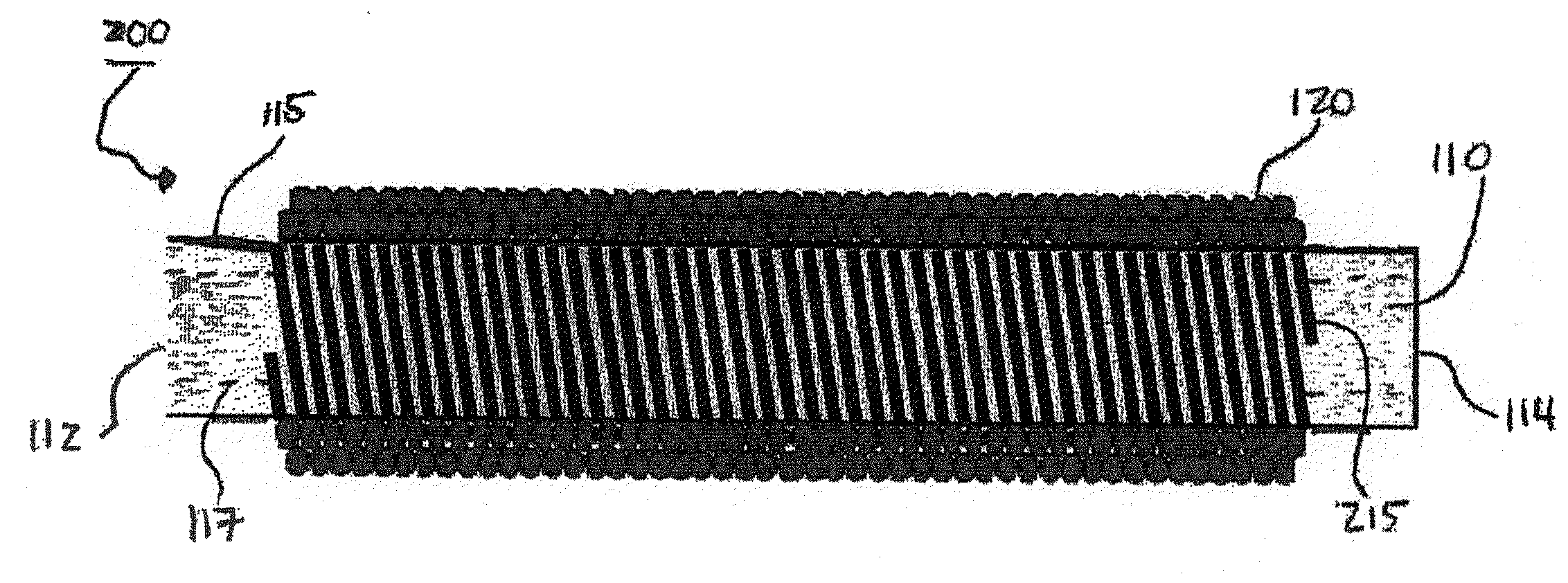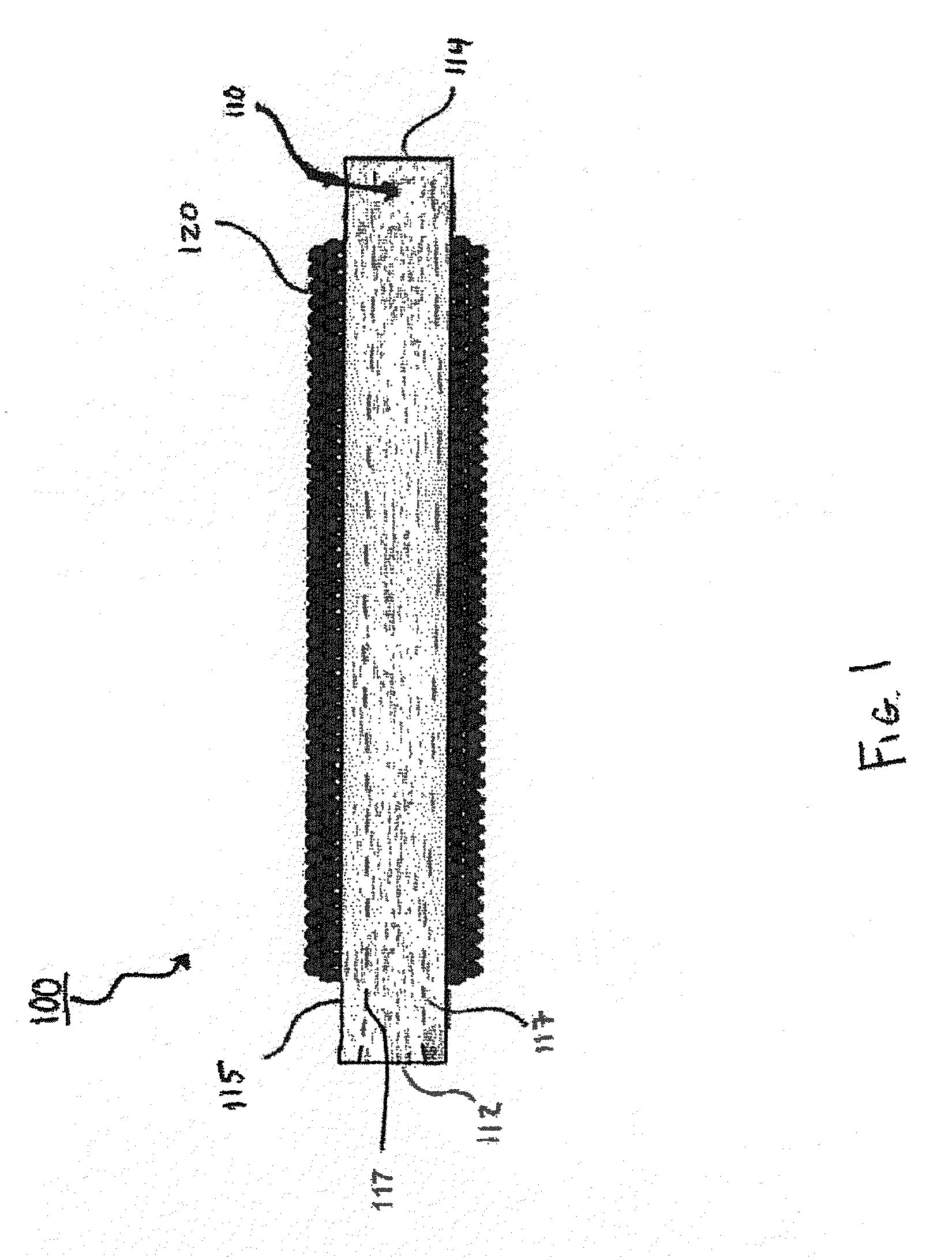Solar receiver utilizing carbon nanotube infused coatings
- Summary
- Abstract
- Description
- Claims
- Application Information
AI Technical Summary
Problems solved by technology
Method used
Image
Examples
example i
[0128]This example shows the manufacture of CNT infused coating for use in a solar receiver and characterization of a model.
[0129]A CNT based coating can be manufactured by the following procedure:
[0130]CNTs are infused to a carbon fiber tow (carbon fiber being exemplary) in a reel-to-reel system as outlined above. The CNT infused fiber tow is then wrapped over a heating element. Additional reflective layers are added as needed. A coating made by this procedure is expected to exhibit characteristics of being a solar selective coating. The exact characteristics of a coating employing CNT-infused fibers will depend on CNT length and density.
[0131]FIG. 16 shows the reflectivity data for a model of this CNT-infused fiber coating, namely Buckypaper, with an overlay of a theoretical ideal coating indicated as a dashed line. The CNT-infused fiber wrapped around a heating element has an arrangement of CNTs similar to Buckypaper. The arrangement of CNTs in Buckypaper are shown in the SEM ima...
PUM
| Property | Measurement | Unit |
|---|---|---|
| Energy | aaaaa | aaaaa |
| Heat | aaaaa | aaaaa |
| Emissivity | aaaaa | aaaaa |
Abstract
Description
Claims
Application Information
 Login to View More
Login to View More - R&D
- Intellectual Property
- Life Sciences
- Materials
- Tech Scout
- Unparalleled Data Quality
- Higher Quality Content
- 60% Fewer Hallucinations
Browse by: Latest US Patents, China's latest patents, Technical Efficacy Thesaurus, Application Domain, Technology Topic, Popular Technical Reports.
© 2025 PatSnap. All rights reserved.Legal|Privacy policy|Modern Slavery Act Transparency Statement|Sitemap|About US| Contact US: help@patsnap.com



